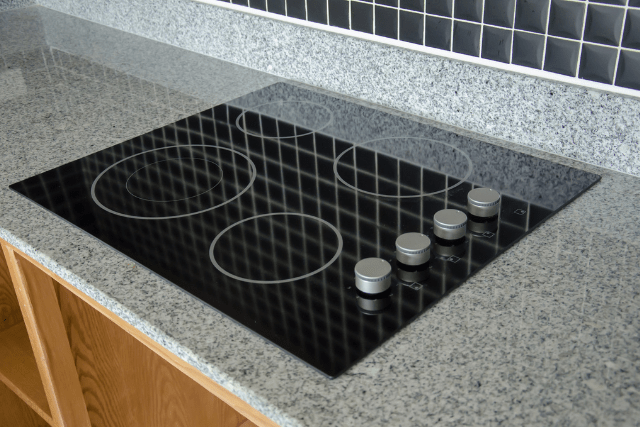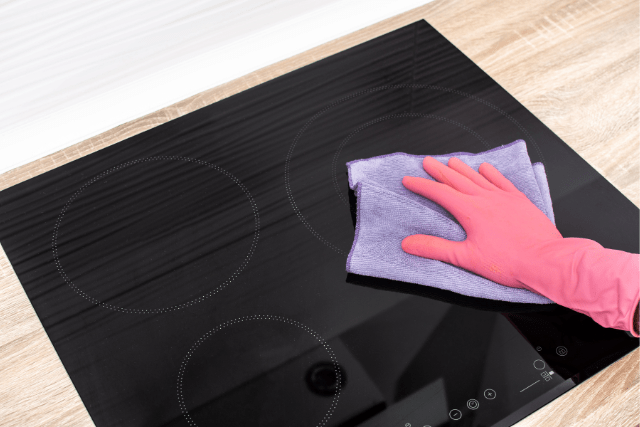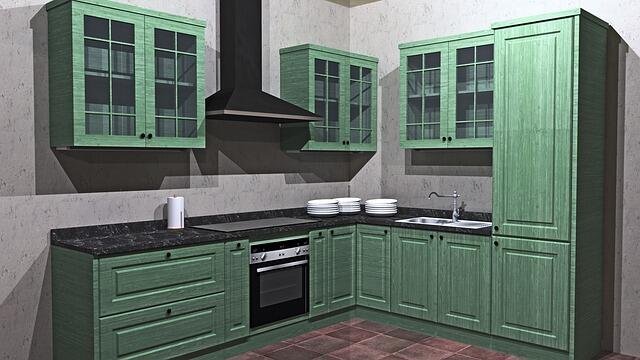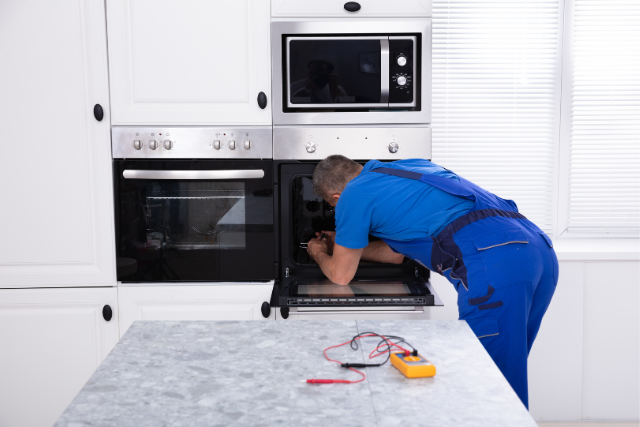You might not be aware, but your choice between an induction cooktop and a gas stove can significantly impact your kitchen’s efficiency and your cooking experience.
As you ponder which suits your culinary needs and lifestyle, consider aspects such as affordability, energy efficiency, and safety, which often go overlooked.
Whether you lean towards the precise control and modern appeal of induction cooking or favour the traditional flame and flexibility of a gas stove, understanding their distinct advantages and maintenance requirements is crucial.
Let’s explore how each option aligns with your preferences, potentially transforming your kitchen into a more functional and enjoyable space.
Key Takeaways – Induction vs Gas Stove Comparison
- Induction cooktops offer superior energy efficiency and safety but come with higher initial costs and cookware compatibility requirements.
- Gas stoves provide a traditional cooking experience with versatile cookware compatibility, though they pose higher safety risks and environmental impacts.
- For long-term savings and a cleaner kitchen environment, induction cooktops are the better choice due to their energy efficiency and minimal heat waste.
- The choice between induction cooktops and gas stoves depends on personal preferences for cooking control, kitchen design, and upfront versus long-term cost considerations.
Introduction
When you’re outfitting your kitchen, choosing between an induction cooktop and a gas stove is a crucial decision. Each option has its unique benefits and drawbacks, significantly impacting your cooking experience and kitchen efficiency.
Before diving into the comparison, you must understand what an induction cooktop and a gas stove are, as they represent two fundamentally different cooking technologies.
An induction cooktop uses electromagnetic energy to directly heat pots and pans, while a gas stove relies on combustion, burning natural gas or propane to produce heat.
- Induction cooktops are revered for their efficiency and safety features.
- Gas stoves offer a traditional cooking experience with flame control.
- Induction requires compatible cookware, typically made of ferrous materials.
- Gas allows for the use of almost any cookware type.
Selecting the right cooking appliance for your kitchen is a crucial decision that affects not just meal preparation but also your overall culinary experience. It’s about finding a balance between efficiency, convenience, and your cooking style.
Whether you’re a seasoned chef or a novice in the kitchen, the choice between an induction cooktop and a gas stove can significantly dictate the pace and quality of your cooking. It’s not just about the food; it’s about making your kitchen a space where culinary creativity thrives.
Opting for the appliance that aligns with your needs can transform cooking from a mundane task into a delightful journey. So, take a moment to consider what truly matters to you in the kitchen. Your choice can set the stage for culinary exploration and freedom.
Affordability and cost
When you’re weighing the options between an induction cooktop and a gas stove, it’s crucial to consider both the initial purchase and installation costs as well as the long-term expenses. Induction cooktops might hit your wallet harder at the outset, but their efficiency could lead to savings down the line.
Let’s explore how each option stacks up in terms of affordability and ongoing costs, helping you make a financially sound decision for your kitchen.
The initial cost of purchasing and installing an induction cooktop vs a gas stove
Comparing the initial cost of purchasing and installing an induction cooktop versus a gas stove is essential in determining which fits your budget better. You’re looking for the best option that doesn’t just meet your cooking needs but also aligns with your financial constraints.
- Induction cooktops often come with a higher price tag due to their advanced technology.
- Gas stoves might be more affordable upfront and are widely used.
- The cost of installation can vary significantly; gas stoves require a gas line, potentially adding to the expense.
- Induction cooktops need compatible cookware, which might mean an additional investment.
Knowing these factors, you’re better equipped to make a choice that doesn’t just liberate your culinary skills but also respects your budget.
Long-term costs of using induction cooktop vs gas stove
Understanding the long-term costs associated with using an induction cooktop versus a gas stove can significantly impact your budget over time. It’s not just about the initial purchase; you’ve got to consider the ongoing expenses too. Here’s a quick comparison to guide you:
| Aspect | Induction Cooktop | Gas Stove |
|---|---|---|
| Energy Efficiency | High | Moderate |
| Utility Costs | Lower | Higher |
| Maintenance | Less Frequent | More Frequent |
Induction cooktops, although pricier upfront, tend to be more energy-efficient, leading to lower utility bills. They also require less maintenance compared to gas stoves, which can add up in savings.
So, in the long run, you might find that spending a bit more now can free you from higher costs down the line.
Cooking performance
When you’re choosing between an induction cooktop and a gas stove, the cooking performance is a crucial factor to consider. You’ll find that induction cooktops offer remarkable speed and efficiency, but gas stoves might give you more control over temperature consistency and heat distribution.
Let’s look at how these differences affect your cooking options and versatility in the kitchen.
Speed and efficiency of cooking on induction cooktop vs gas stove
In the realm of kitchen efficiency, induction cooktops often outpace gas stoves in both speed and energy use, offering you quicker meal preparations. This isn’t just about saving time; it’s about transforming how you engage with your culinary creations. Let’s dive into why opting for an induction cooktop could revolutionize your cooking experience:
- Rapid heating: Induction cooktops heat up almost instantly, slashing your waiting time.
- Energy efficiency: They use less energy, reducing your bills and environmental footprint.
- Precision cooking: Achieve the exact temperature you need in moments, without the guesswork.
- Less residual heat: This keeps your kitchen cooler, enhancing your comfort while you whip up your favourite dishes.
Embrace the future of cooking with induction – where speed, efficiency, and precision meet to liberate your culinary adventures.
Consistency in temperature control and heat distribution
While exploring the benefits of induction cooktops, it’s essential to consider how they excel in maintaining consistent temperatures and distributing heat evenly, crucial aspects for any culinary enthusiast aiming for perfection in their dishes.
Unlike gas stoves, which can create hot spots and uneven cooking due to the nature of flame heating, induction technology directly heats your cookware.
This means you’re less likely to encounter surprises when you’re aiming for that precise simmer or sear. You’ll find your sauces and chocolates melting with grace, without the fear of scorching.
For you, this translates to greater confidence and freedom in the kitchen. You’re not just cooking; you’re orchestrating a symphony of flavours, where each note hits just right, thanks to the unparalleled control at your fingertips.
Cooking options and versatility
Exploring the realm of cooking options and versatility, you’ll find that induction cooktops offer various culinary possibilities that can significantly enhance your kitchen’s performance. Unlike traditional gas stoves, induction cooking brings you closer to the freedom you crave in the kitchen. Here’s why:
- Precision Cooking: Achieve exact temperatures for intricate recipes.
- Diverse Cookware Compatibility: Use a wide range of induction-friendly pots and pans.
- Innovative Features: Benefit from functions like a power boost for rapid heating.
- Safety and Cleanliness: Enjoy a cooler kitchen and easier clean-up.
Induction cooking empowers you with tools and flexibility to explore new culinary horizons, making it a liberating choice for those who love experimenting and demanding precision in their cooking adventures.
Energy efficiency – Induction or Gas
When you’re weighing the options between an induction cooktop and a gas stove, considering their energy efficiency is crucial. You’ll want to know how much energy each uses and how that impacts your electricity bills. This comparison might sway your decision on the best fit for your kitchen.
Energy consumption of induction cooktop vs gas stove
You’ll find that an induction cooktop typically uses less energy and is more efficient than a gas stove, making it a greener choice for your kitchen.
By harnessing electromagnetic energy to heat your pots and pans directly, induction cooktops waste less heat than the indirect heating method used by gas stoves.

This not only helps in conserving energy but also contributes to a cooler kitchen environment. Here are a few points to consider:
- Induction cooktops convert about 90% of their energy directly to the cooking vessel, while gas stoves achieve around 40%.
- Faster heating times with induction reduce energy consumption further.
- Precise temperature control minimizes the risk of overheating and wasting energy.
- The cooler kitchen environment means less need for air conditioning, further reducing energy use.
Impact on electricity bills
Considering the energy efficiency of induction cooktops can significantly lower your electricity bills compared to using a gas stove.
It’s all about making smart choices that liberate you from high costs and inefficiencies. Induction cooktops only heat the cookware, not the surrounding air, meaning you’re not paying to warm your kitchen instead of your food.
This direct heating method is why you’ll see a decrease in your electricity bills. Plus, the precision control allows for less energy waste.
In essence, by opting for an induction cooktop, you’re not just cooking smarter; you’re also saving money.
Adapt the change, and watch as your bills reflect the efficiency of your decision. It’s a practical step towards a more liberated lifestyle.
Safety
When considering a kitchen upgrade, weighing the safety aspects of induction cooktops against gas stoves is crucial. You’ll want to be aware of the potential risk of fire and gas leaks from using a gas stove. Meanwhile, induction cooktops offer enhanced safety features, including child safety considerations, making them safer for families.
Risk of fire and gas leaks with gas stove
Regarding gas stoves, it’s crucial to be aware of the heightened risk of fire and the potential for gas leaks, which demand vigilant safety practices. When embracing the culinary exploration journey, understanding these risks not only empowers you but also ensures a safer kitchen environment.
- Regular maintenance is key to detecting wear and tear that could lead to leaks.
- Invest in a quality gas leak detector to alert you of unseen dangers.
- Keep flammable materials away from the stove to reduce fire hazards.
- Educate everyone in the household about turning off the gas supply if they smell gas.
Employ these practices to confidently navigate the risks associated with gas stoves, making your kitchen a space of creativity, not caution.

Safety features of induction cooktop
Induction cooktops elevate kitchen safety by leveraging advanced technology to minimize common cooking hazards. Unlike traditional stoves, they don’t operate by generating high external heat.
Instead, they use magnetic fields to heat the cookware directly. This brilliant approach means the cooktop surface remains relatively cool to the touch, drastically reducing the risk of burns. There’s no open flame or exposed heating element, slashing the chance of kitchen fires. Plus, without the need for gas, you eliminate the dangers of gas leaks.
It’s a game-changer for those seeking peace of mind while whipping up your culinary creations. You’re not just cooking; you’re ensuring your kitchen becomes safer for everyone who steps into it.
Child safety considerations
Let’s understand how the design of induction cooktops offers additional layers of protection for families with young children.
You’re aiming for a efficient and safe kitchen, especially when little adventurers are around. Here’s why induction cooking might be your ally in achieving that peace of mind:
- Cool-to-touch surfaces: Induction cooktops heat pots directly, leaving the surface cooler.
- No open flames: Eliminates risks of burns or accidents from contact with fire.
- Child lock features: Prevents accidental changes in settings or activation.
- Automatic shut-off: Reduces risks of overheating and related accidents.
Using induction technology means you’re not just cooking smarter; you’re prioritizing your family’s safety, giving you one less thing to worry about in your busy kitchen.
Maintenance and cleaning
Let’s tackle the topic of maintenance and cleaning between induction cooktops and gas stoves, a crucial aspect you’ll need to consider. You’ll find that these appliances’ ease of cleaning and durability can significantly influence your daily kitchen routine.
Understanding these differences will help you make a more informed decision on which suits your lifestyle better.

Ease of cleaning induction cooktop vs gas stove
When comparing the ease of cleaning between an induction cooktop and a gas stove, you’ll find that the maintenance involved significantly differs.
- Induction cooktops have a flat, smooth surface, making them a breeze to wipe down. You won’t have to dismantle anything to get them sparkling clean.
- On the other hand, gas stoves require you to remove grates and burners for a thorough cleaning, which can be a bit of a hassle.
- Spills and boil-overs on an induction cooktop won’t burn onto the surface, thanks to its cool cooking technique.
- In contrast, on a gas stove, spills can get cooked onto the surface and around the burners, making them tougher to clean.
Choosing the right option can significantly reduce your kitchen cleanup time, letting you focus more on cooking and less on scrubbing.
Durability and maintenance requirements
Understanding your kitchen appliances’ durability and maintenance requirements is crucial to deciding between an induction cooktop and a gas stove.
Induction cooktops boast a sleek, flat surface that resists wear and tear and simplifies cleaning. You won’t find yourself scrubbing away at stubborn food particles or disassembling parts to keep it pristine.
On the flip side, gas stoves demand more elbow grease and attention. Their grates and burners often require thorough cleaning and occasional replacement, adding to your maintenance checklist.
If you’re aiming for a modern and manageable kitchen, an induction cooktop stands out as a durable, low-maintenance option that frees up your time and energy for more enjoyable culinary exploits.
Environmental impact
When deciding between an induction cooktop and a gas stove, it’s crucial to consider the environmental impact of each.
You’ll want to weigh the carbon footprint of both options and understand which is more eco-friendly. This comparison will help you choose to align with your sustainability goals.
The carbon footprint of induction cooktop vs gas stove
In comparing the environmental impact of induction cooktops and gas stoves, it’s crucial to consider their carbon footprints. Let’s dive into what makes each option unique in its environmental influence:
- Gas stoves rely on fossil fuels, directly releasing carbon dioxide and methane during use.
- Induction cooktops use electricity, which can be sourced from renewable energy, potentially reducing their carbon footprint.
- Efficiency plays a significant role; induction cooktops transfer more energy directly to the cooking vessel, wasting less heat.
- Lifecycle emissions also matter; consider each appliance’s production, use, and disposal phases.
Understanding these aspects helps you make an informed choice, steering your kitchen practices towards a greener future while focusing on your culinary needs.
Eco-friendliness of each option
Building on the carbon footprint analysis, let’s explore how the eco-friendliness of induction cooktops and gas stoves impacts our planet.
Induction cooktops shine in this arena, relying on electricity sourced from renewable energy, significantly reducing their environmental impact. They don’t emit harmful gases or pollutants indoors, aligning with a cleaner, greener kitchen ethos.
On the flip side, gas stoves depend on fossil fuels, directly contributing to CO2 emissions and indoor air pollution. This not only affects the planet but also your home’s air quality.
If you’re leaning towards a sustainable lifestyle, induction cooking is a step in the right direction. It’s a choice that supports cleaner energy use and nudges us closer to a healthier planet.
Design and aesthetics
Shifting gears to design and aesthetics, it’s essential to consider how both induction cooktops and gas stoves blend with your kitchen’s overall decor.
You’ll find that induction cooktops offer a sleek, modern look that can seamlessly integrate into any contemporary kitchen design.
On the other hand, gas stoves provide a classic appeal that many find essential for that traditional kitchen ambience.
Appearance and design options of induction cooktop vs gas stove
When comparing the appearance and design options of induction cooktops and gas stoves, you’ll find that each offers unique aesthetics to match your kitchen’s style.
- Induction Cooktops: Sleek and modern blend seamlessly into your countertop, offering a minimalist look. They’re available in various sizes and finishes, including black, white, and stainless steel.
- Gas Stoves: Traditional yet versatile, they add a professional kitchen vibe with their robust build. You can choose from stainless steel, black, or white finishes, and some models feature unique colour options or vintage designs.
- Customization: While induction cooktops offer a more uniform look, gas stoves provide more room for customization through different knob styles and layout configurations.
- Visual Impact: Induction cooktops offer a smooth, uncluttered appearance, whereas gas stoves provide a tactile, professional kitchen aesthetic.
Integration with overall kitchen decor
Choosing between an induction cooktop and a gas stove significantly impacts your kitchen’s overall decor, reflecting your style and functional preferences. Let’s break it down with a clear comparison:
| Feature | Induction Cooktop | Gas Stove |
|---|---|---|
| Aesthetic | Sleek, modern | Traditional, professional |
| Colour Options | Various, including black, white, and grey | Mostly stainless steel, black |
| Installation | Flush with the countertop, seamless | Stands out, requires clearance |
| Space Efficiency | Maximizes counter space | Potentially bulky, varies by model |
| Ambience | Minimalist, clean lines | Robust, hearty cooking feel |
Your choice should harmonize with your kitchen’s theme and how you envision its look and feel. Whether you’re drawn to the modern, seamless integration of an induction cooktop or the classic appeal of a gas stove, ensure it complements your kitchen’s aesthetic.
Conclusion – Induction Stove Vs Gas Stove
Now it’s time to weigh those factors against your cooking habits, kitchen design preferences, and energy efficiency desires. Choosing the right option hinges on understanding and aligning these key points with what matters most to you.
Summary of key points comparing induction cooktop and gas stove
In comparing induction cooktops and gas stoves, weighing their unique benefits and drawbacks is crucial to determine which best suits your cooking style and kitchen needs. Here’s a quick rundown to guide you:
- Efficiency: Induction cooktops heat up faster and distribute heat more evenly than gas stoves.
- Safety: Induction surfaces stay cool to the touch, reducing burn risks, whereas gas stoves have open flames.
- Maintenance: Cleaning is simpler with the flat, smooth surface of induction cooktops, as opposed to the grates and burners of gas stoves.
- Energy Use: Induction cooktops are more energy-efficient, converting almost all electric energy to heat, while gas stoves lose a lot of heat to the surroundings.
Each option has its merits, so consider what matters most for your culinary ventures.
Frequently Asked Questions
What is the main difference between an induction stove and a gas stove?
The main difference is how heat is generated. Gas stoves utilize burning gas to create flames that heat your cookware. Induction stoves use electromagnetic energy to directly heat the cookware itself without any flame or heating element.
Which is faster, gas or induction cooking?
Induction cooking is much faster, heating cookware almost instantly. Gas requires waiting for flames to warm up and gradually transfer heat.
Is induction or gas cheaper to operate?
Induction is generally more energy efficient than gas cooking. But gas may be cheaper depending on local energy costs and stove usage.
What are the benefits of induction cooking?
Faster heating, very precise temperature adjustments, cool-to-touch surfaces, easy cleaning, and potential energy savings over gas.
Can Induction Cooktops Interfere With Electronic Devices or Pacemakers?
Yes, induction cooktops can interfere with electronic devices and pacemakers. You’ll need to maintain a safe distance to avoid potential issues. It’s crucial to consult device guidelines and possibly your doctor for specific advice.
How Does Altitude Affect the Cooking Performance of Gas Stoves and Induction Cooktops?
Altitude won’t bother your induction cooktop’s performance, but it may affect gas stoves, making them less efficient as you go higher. You’ll find your meals cook just as fast, regardless of the elevation.
Are There Specific Cookware Materials That Work Best With Induction Cooktops and Gas Stoves, and How Do They Impact Flavor?
You’ll find that induction cooktops work best with magnetic-based cookware, while gas stoves are more flexible. The cookware you choose can impact flavour subtly, especially with even heating or specific material reactions.
Can the Installation of a Gas Stove or Induction Cooktop Affect My Home’s Resale Value?
Yes, installing either a gas stove or an induction cooktop can boost your home’s resale value. They’re seen as premium features, attracting buyers who’re keen on modern or versatile cooking methods. Choose what fits your style!
How Do Gas Stoves and Induction Cooktops Perform During Power Outages or in Off-Grid Settings?
During power outages or in off-grid settings, you’ll find gas stoves more reliable since they don’t require electricity. Induction cooktops, however, won’t work without power, limiting their usefulness in such situations.
Conclusion
Choosing between an induction stove and a gas stove boils down to your cooking preferences, budget, and values. If you’re after energy efficiency, safety, and ease of cleaning, induction might be your best bet. However, if you prefer traditional cooking methods and have a tighter budget, a gas stove could suit you better.
Consider the environmental impact and aesthetics that match your kitchen’s vibe. Ultimately, the right choice enhances your cooking experience and complements your lifestyle.







